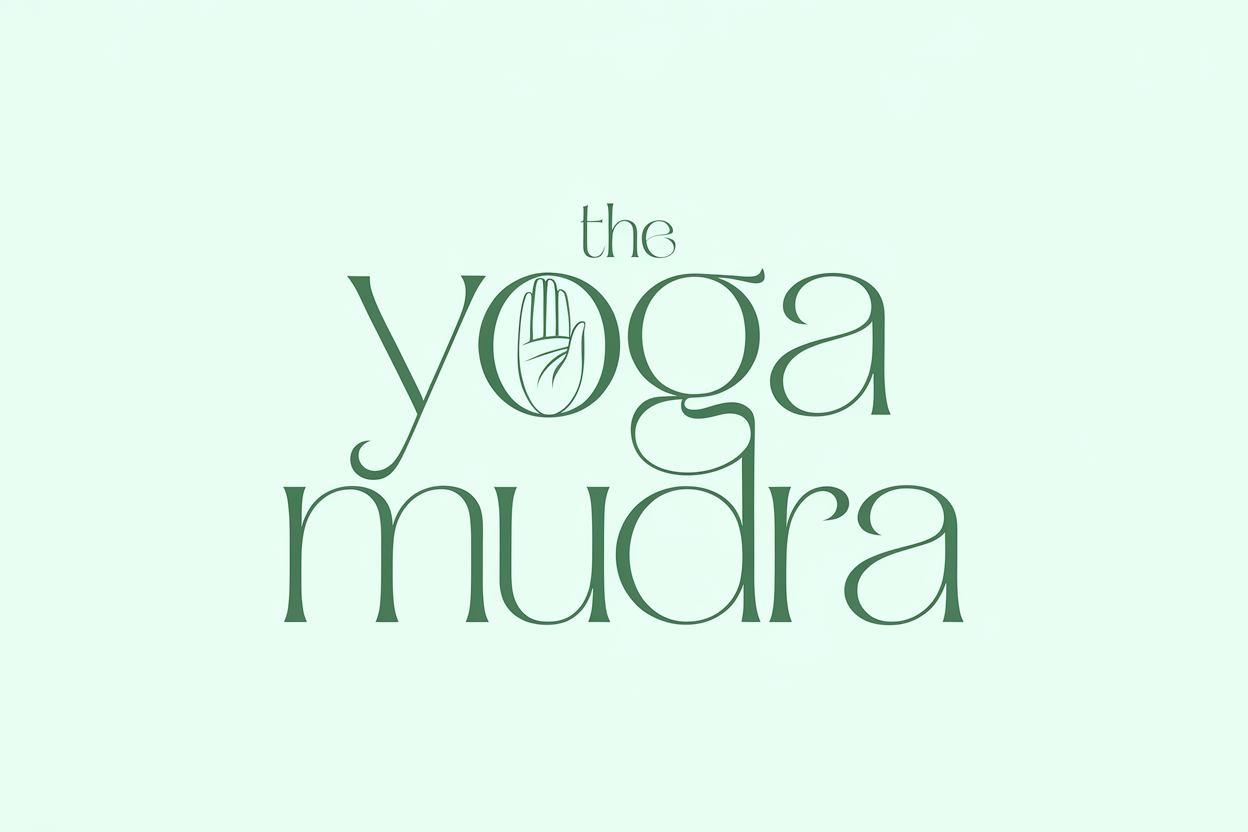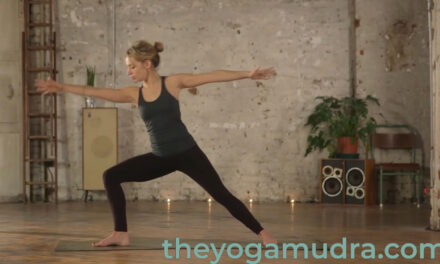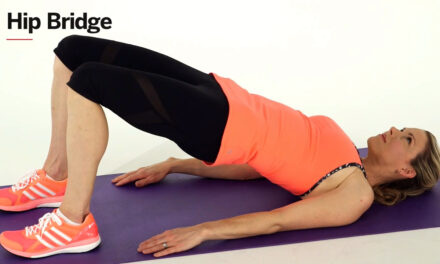POSTURE 83: BIRD OF PARADISE POSE
Skrit : Svarga Dvijasana [Svah-gah Dvi-jah-sa-na]
Level : Advanced
DESCRIPTION OF THE POSTURE
The Bird of Paradise Pose is an elegant asana that strengthens the thighs, legs, ankles, and knees while toning the legs and improving balance. It also opens the hips, hamstrings, and groin region. Symbolizing grace and lightness, it invites practitioners to explore the connection between strength and fluidity.
LEVEL OF DIFFICULTY
This posture is classified as advanced, as it requires good mastery of balance, significant strength in the legs, arms, and core stabilizing muscles, along with sufficient flexibility in the hips and shoulders. Beginners can practice preparatory poses or use props to progress gradually.
Steps to Perform the Posture :
- Starting Position : Garland Pose (Malasana)
Begin in the Garland Pose, squatting with your feet together and your knees slightly apart. Inhale deeply to lengthen your spine and prepare your body.
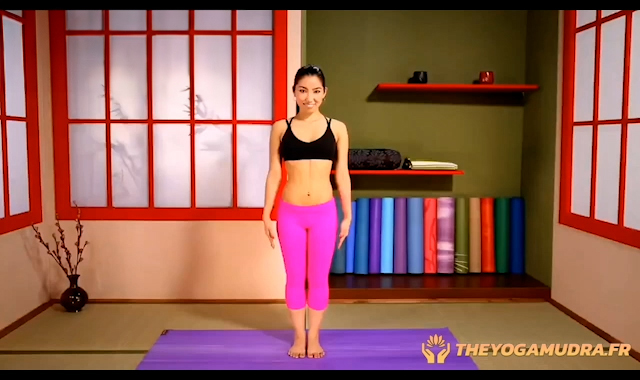
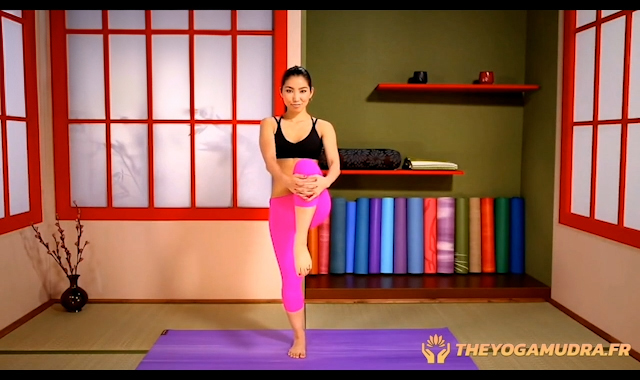
- Transition into Svarga Dvijasana
Wrap your left arm behind your back and pass your right arm under your inner right thigh. Clasp your hands behind your back if possible. If you cannot join your hands, use a strap to bridge the gap.
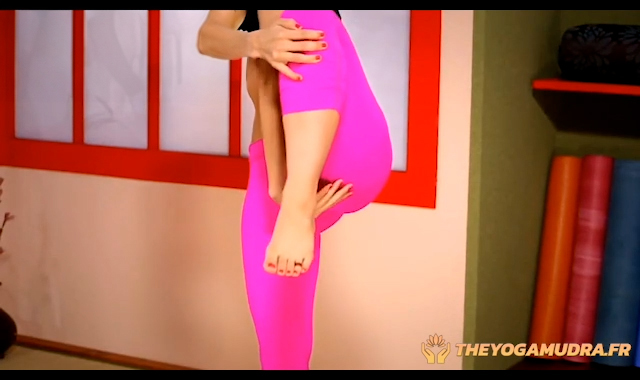
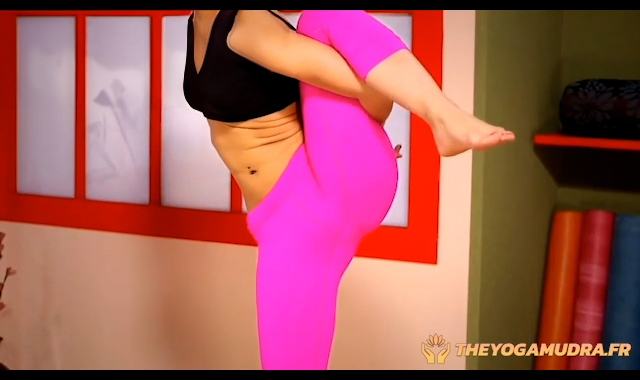
- Positioning and Adjustments
Slightly straighten your bent legs and fix your gaze on a stationary point on the floor to maintain balance. Gradually shift your weight onto your left foot, keeping a strong bend in your left leg. Round your spine as you slowly lift your right foot off the ground. Fully extend your left leg and raise your gaze, ensuring your right knee is positioned between your elbow and shoulder. Then straighten your right knee, lifting your right foot high into the air. - Holding and Adjustments
Hold this posture for 30 to 60 seconds, breathing calmly and steadily. With each exhale, gently deepen the stretch in your hips, hamstrings, and groin. Release any tension in your shoulders and neck. To exit the posture, gently lower your right leg to the ground and return to the Garland Pose (Malasana). Rest for a few moments before repeating on the other side.
Extract from our book The Art of Yoga – Posture #83
Discover the power of yoga to transform your body, calm your mind, and redefine your daily life — even if you're just starting today.
Dive into an inner journey with this complete and gentle book, designed to introduce you to yoga in a simple and authentic way. Accessible to all, rich in ancestral techniques and practical advice, it helps you cultivate strength, serenity, and mental clarity in your daily life. Let yoga return to what it has always been: a philosophy of life, within your reach.
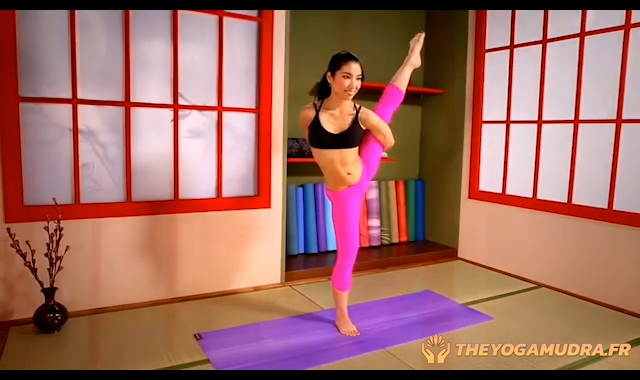

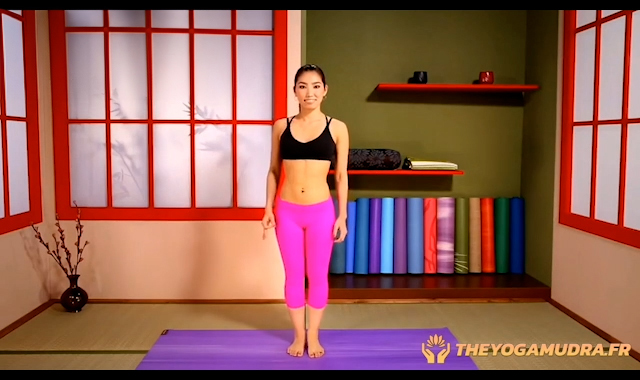
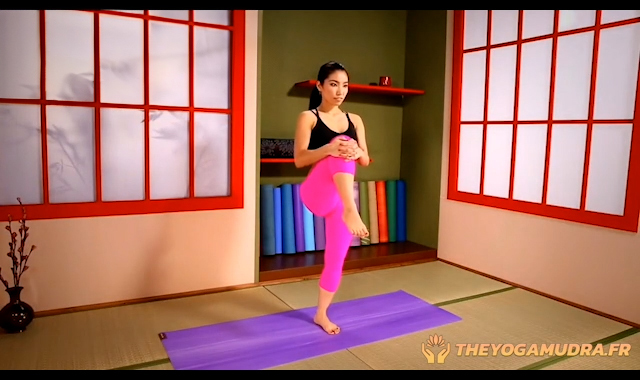
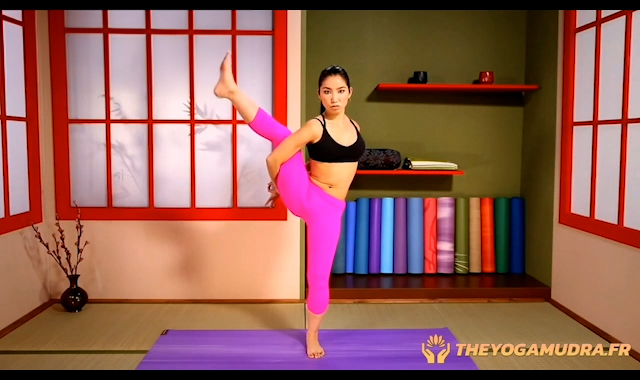
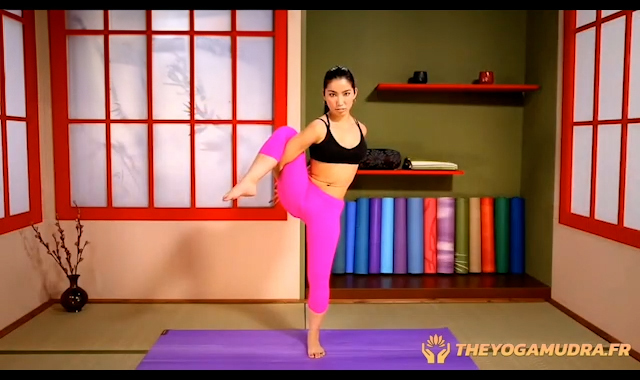

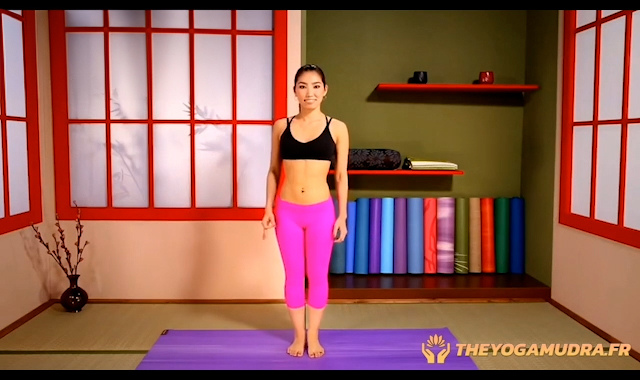
- Exiting the Posture
To exit the posture, gently bend your left leg and lower your right foot to the ground. Transition into a resting pose like Child’s Pose (Balasana) if needed.
SPECIFIC BENEFITS
- Physical :
This posture primarily targets the thighs, legs, ankles, knees, hips, hamstrings, and groin region. It improves joint mobility, stimulates blood circulation, and helps strengthen stabilizing muscles. It may also tone the legs and promote better overall posture. - Mental :
By cultivating relaxation and mindfulness, it helps calm the mind and release accumulated tension. Ideal for centering yourself and soothing the mind. - Energetic :
In Ayurvedic medicine, Svarga Dvijasana activates Muladhara, the root chakra, associated with stability and grounding, as well as Svadhisthana, the sacral chakra, linked to creativity and emotion.
TIPS & VARIATIONS
- For Beginners :
If you struggle to clasp your hands behind your back, use a strap to bridge the gap. You can also keep a slight bend in your legs to reduce pressure. - With Props :
Place a bolster or cushion under your buttocks to support your posture or use a mirror to check that your spine remains aligned. - For Pregnant Women :
Opt for a modified version where your knees remain slightly bent to create space for your belly. Work gently to avoid excessive tension. - Seated Version :
For individuals with limited mobility, practice a seated pose like Bound Angle Pose (Baddha Konasana) to simulate the benefits of this posture.
SAFETY CONSIDERATIONS
- Knee Caution : Do not force your knees beyond their natural range of motion. Use props to reduce pressure.
- Lower Back Relaxation : Avoid over-arching your lower back. Engage Mula Bandha (pelvic floor lock) to protect your spine.
- Contraindications : This posture is not recommended in cases of severe injuries to the knees, hips, or back.
BREATHING INSTRUCTIONS
- Inhale deeply as you lengthen your spine and prepare your posture.
- Exhale calmly to release any tension and stabilize your posture.
- During the hold, breathe steadily to stabilize your energy and maximize the benefits.
IMPORTANT TO KNOW
Actively engage your abdominal muscles to maintain proper alignment and avoid excessive arching in your lower back. Visualize your body as a graceful bird, symbolizing elegance and lightness.
HISTORICAL OR PHILOSOPHICAL NOTE
Svarga Dvijasana, literally « the bird of paradise pose, » symbolizes transformation and inner liberation. In some yogic traditions, this posture represents the ability to overcome obstacles with fluidity and courage, inviting practitioners to cultivate patience and resilience.
✨ Practice Safely :
Consult a doctor if you experience persistent pain or unusual discomfort during or after practicing.
Recommended Duration :
Hold the posture for 30 to 60 seconds on each side, accompanied by deep breathing.
